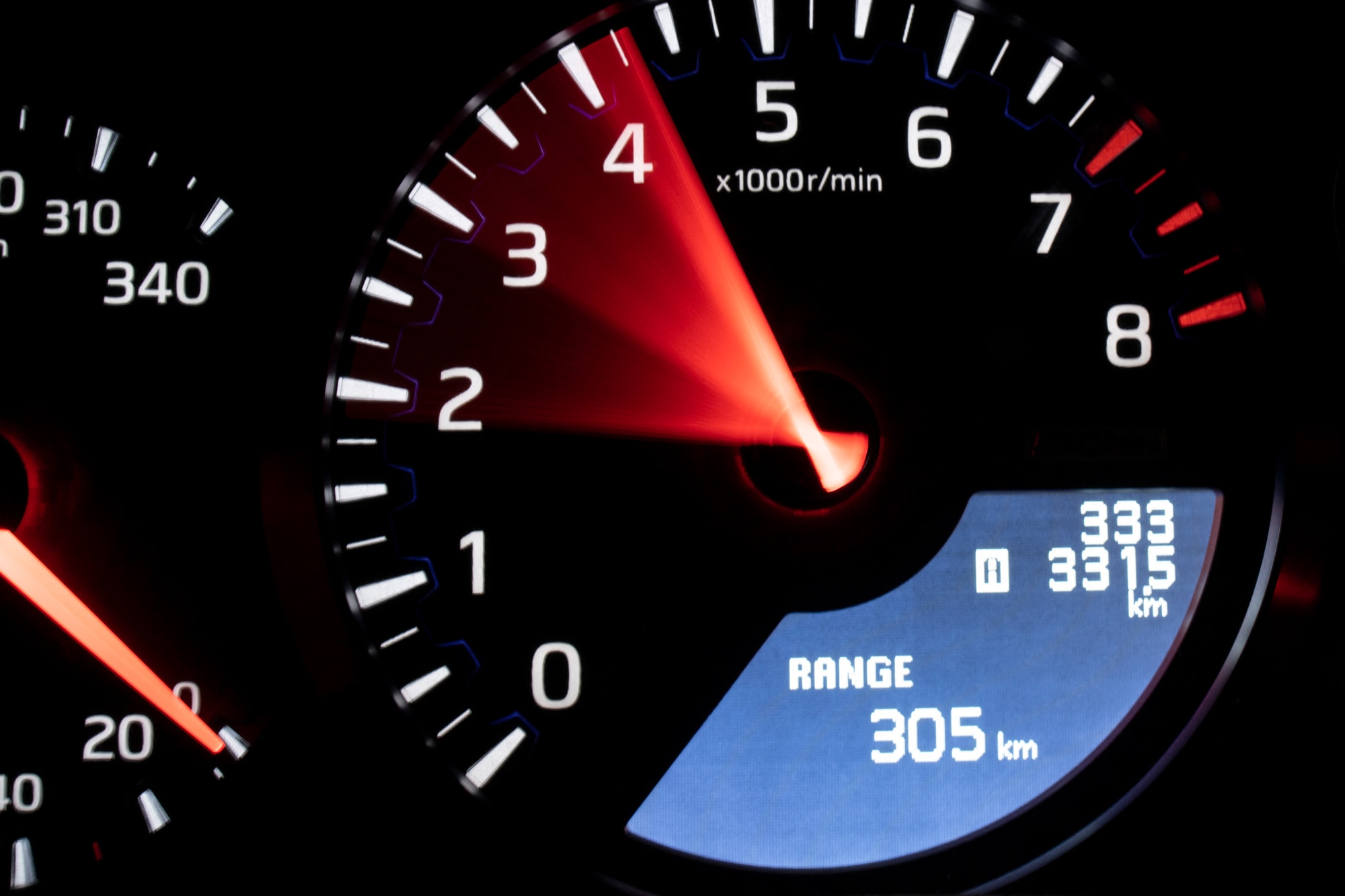The Rev Limiter: Teaching Drivers When to Say When
You might not know it's there, but this device could save your engine from catastrophic damage.
 Nissan
Nissan
You might not realize it, but your car has many features that exist solely to protect its mechanical components from harm. These features can prevent additional wear and tear on an already compromised vehicle, from a basic check-engine light to limp mode — where in the case of a serious engine failure, a car's nonessential functions are disabled and driving speed is limited.
One of the most important of these features is the rev limiter. A sibling of the more rudimentary speed governor, this device restricts the maximum number of revolutions per minute an engine can achieve, thereby preventing "overspeeding," which can severely damage your engine's internal components.
The Engine's Speed Is Displayed on the Tachometer
Modern internal-combustion engine vehicles dictate speed and acceleration by calculating the revolutions per minute (rpm) of the crankshaft, which converts the pistons' up-and-down motion into rotational energy that is sent to the transmission. The rpm is displayed for the driver via the tachometer, which is usually found next to the speedometer in a vehicle's gauge cluster. That said, not all cars have tachometers. They were largely left out of economy-minded models until recently, and some hybrid cars use that instrument panel space to show an energy efficiency meter.
The transmission depends heavily on the rate of revolutions per minute, as rpm speed significantly influences the amount of power being delivered to the wheels. Low rpm will generate more torque in a lower gear, helping you get off the line from a dead stop, while the same range of rpm could stall the vehicle if that start is attempted in a higher gear.
When the transmission is operated correctly, the proper rpm will deliver a smooth torque curve, easy shifts from gear to gear, and the highest top speed possible.
The Rev Limiter Enforces Your Vehicle's Redline
This pursuit of the most efficient rpm-to-gear ratio is where the rev limiter comes into play. As a precaution during acceleration, the limiter makes it impossible to push the car past the safe maximum rpm for that gear by enforcing what's called the redline.
The redline is represented on the tachometer by a literal red line or red zone at the top end of the rpm range. Push your rpm into this range and you risk damaging your engine.
This is most relevant for manual-transmission vehicles, such as the quick-footed Nissan GT-R sports car, although the redline is still displayed in automatic-transmission vehicles as a precaution. While the computer-assisted shifting of modern automatic gearboxes is programmed to occur at the most efficient point in the gear ratio, rev limiters are in place to prevent accidental damage, especially during hard acceleration or when the car is revved while it's in neutral.
Rev limiters are also effective in automatic vehicles equipped with a manual mode, where driver input is still required either via the gear selector or steering wheel paddles.
Once the redline has been reached, the rev limiter will restrict the flow of fuel into the engine, either by siphoning it, limiting the electronic fuel injectors, or turning off the spark ignition entirely. Once the engine falls back within the safe range of revolutions per minute, combustion is restored.
This adjustment may happen gradually or suddenly, depending on whether your vehicle is equipped with a hard or soft rev limiter. By pausing combustion, the rev limiter stops the driver from pushing the vehicle too far, thus protecting the engine.
Rev Limiters Serve an Important Purpose
Just like any other driver's aid or preventative measure, rev limiters play an important role in your vehicle's longevity — and your own safety. Pushing the car beyond the redline before shifting can result in anything from light internal damage to catastrophic engine failure.
While the rev limiter will assist you in extreme cases, it's always in your best interest to accelerate moderately and shift within your vehicle's appropriate rpm range.
Written by humans.
Edited by humans.
 Brennan Sullivan
Brennan SullivanBrennan Sullivan is a writer and lifelong car fanatic. With an appreciation for all makes and models, Brennan is particularly passionate about the rich history of the automotive industry. In his spare time, he's the caretaker of a 1962 Sunbeam Alpine, and a Golden Retriever named Willow.
Related articles
View more related articles